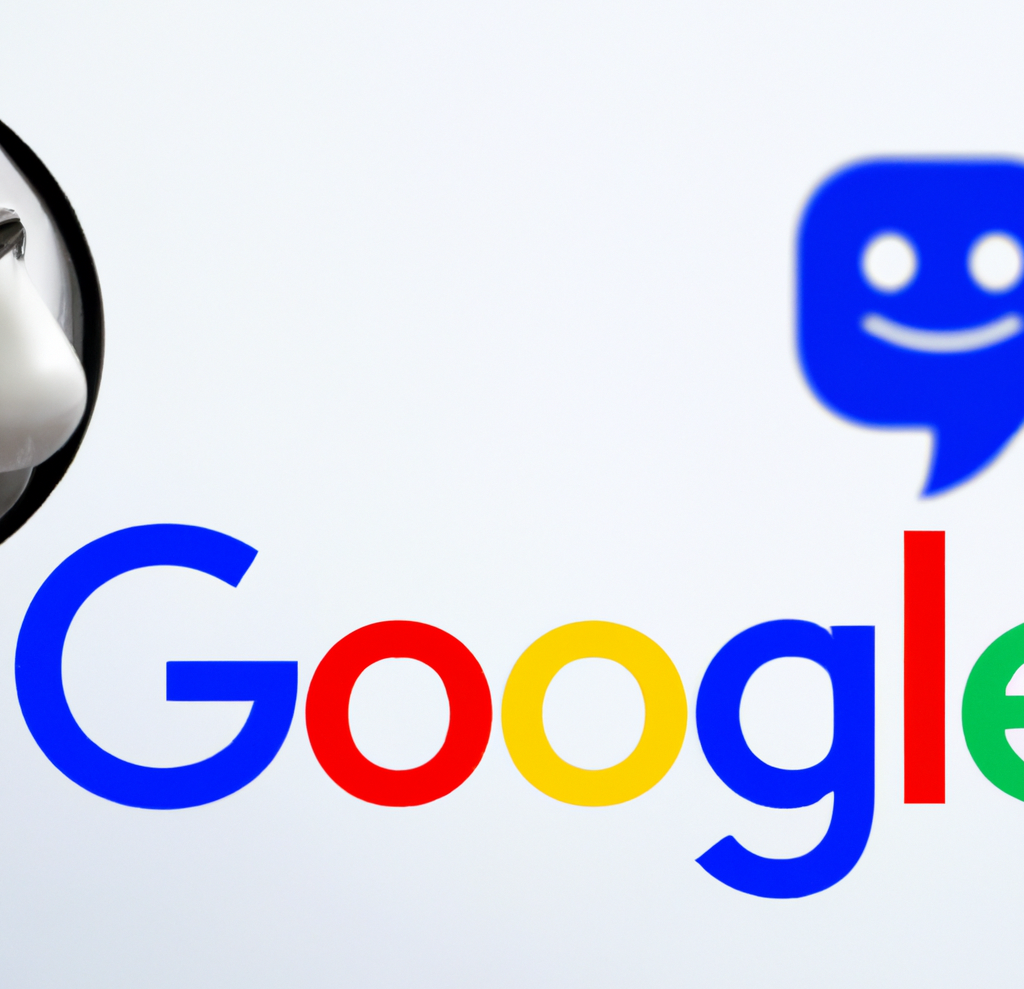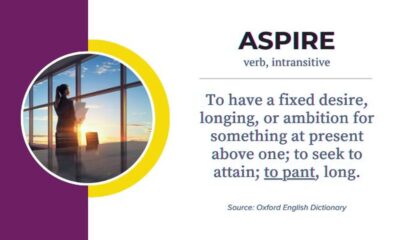What Are Google Web Stories? A Guide for Marketers

Back in February 2018, Google announced AMP stories.
This visually rich, mobile-focused content format felt similar to the “stories” functionality popular on many social media sites.
The underpinning technology is based on the accelerated mobile pages that have been somewhat controversial in the marketing world.
In May 2020, Google rebranded AMP Stories as Web Stories, which they explain are “a web-based version of the popular Story format, allowing creators to host and own their content.”
What Do Google Web Stories Do?
Google Web Stories are a visual content format that can be shown across the internet.
You might find them similar to the stories on Instagram in that they allow creators to publish a succession of images, videos, and audio.
Web Stories are billed by Google as being “fully immersive” thanks to their ability to be viewed full-screen.
Some examples of Google Web Stories being used by brands currently include:
Where Do Web Stories Appear?
One thing that makes Google Web Stories fairly unique amongst the myriad of story-telling functionality found in apps is their ability to be seen across the web.
On Your Website
Whereas the likes of Instagram Stories need to be viewed on that platform, Google’s Web Stories can be hosted on a creator’s own website.
This gives publishers more freedom over what is contained in the story as there are no restrictions around content, unlike many apps.
It also means the story can be used to help to drive traffic to your site, not kept within the walled garden of social media apps.
In the Search Results
One of the main benefits of using Google’s stories above other competitors’ social media story format is their accessibility from the SERPs.
Google Web Stories can be indexed like a web page and served as a Google search result.
In Google Discover
In October 2020, Google announced that they were bringing Web Stories to Google Discover feeds in India, Brazil and the US.
The list of stories, called a “shelf” by Google, sits at the top of Discover.
Tapping on the story brings it to full-screen and allows the user to navigate through the list by swiping.
In Your Online Publications
Because Web Stories are hosted on your own servers it means the content can be used across other digital assets, too, like emails and digital brochures.
On Multiple Devices
Although the AMP technology the web stories is based on is designed for use on mobile devices, web stories can be viewed on mobile, tablet, and desktop browsers.
This increases their utility as there is no need to create desktop-friendly alternatives for responsive assets like websites.
How Do You Create Google Web Stories?
Google is taking publishers by the hand and leading them through the creation of Web Stories.
There are several tools to help put them together and even comprehensive development notes for those who want to think more outside-the-box.
Web Stories Basics
At their core, Google Web Stories are built using the Accelerated Mobile Pages format.
In fact, when you click on the link to the “Developer docs” from Google’s stories website, you’re taken to the amp.dev guides and tutorials page.
Web Stories require HTML mark-up to be valid.
They also can support optional mark-up to enhance the user experience. For instance, it is possible to use HTML mark-up make the story accessible in landscape mode and present it in a more immersive way on desktop.
When creating your web story, you need to set the metadata attributes.
These do not serve as the page title or description of the story but as a preview of the story where it is served across the web.
You can also add a page title, description, Open Graph data, and other elements to optimize your story for search and sharing; this is done through traditional HTML mark-up.
Google’s AMP Test tool will help you to identify if there are any errors with your story.
If your page cannot be validated as a Web Story, there are links to documentation and guidance to help you to rectify the problems.
Third-Party Tools
Third-party tools can help you craft your Web Stories without needing a developer or design team on hand.
Two tools that Google links to from its Web Stories site are News Room AI and MakeStories – neither of which are run, or technically endorsed, by Google.
News Room AI gives creators a WYSIWYG (what you see is what you get) design functionality and a deal with Getty images that grants access to over 300 million images.
MakeStories boasts a zero-code, drag-and-drop functionality to customize your stories including access to Google fonts and “one-click filters” to edit your images.
WordPress Integration
Google has partnered with WordPress to create a plugin that allows publishers to create web stories directly on their WordPress site.
As the stories are built within the WordPress website, they will be included in the site’s XML sitemap allowing for easier discovery by Google.
The plugin also gives creators the ability to set their metadata for the story including cover image, excerpt, and logo.
Shopify Integration
ProductStories is an app that enables your Shopify pages to be converted into Web Stories.
Once the app is installed, an AMP version of each product page is automatically created.
A user can choose from two different themes or request a customized theme from the ProductStories team.
10 Benefits & Uses of Google Web Stories
The format, versatility, and ease of creating Google Web Stories make these a beneficial medium for marketers to explore.
Here are the top 10 benefits and uses of the format.
1. Under Your Control
As the stories can be hosted on a publisher’s own website, the copyright of the content is all theirs.
This means the topics they cover are entirely at their own discretion and without the strict limitations often seen in social media.
The use of the content is also at the publisher’s discretion; Google does not assume any rights over the content.
Google does have some restrictions on the content that can be published, most notable being the policy on content that is “overly commercial.”
It’s worth taking a look over the guidelines before creating your first story – especially if you are using it for promotional purposes.
2. Monetization
Any ads that appear in a Google Web Story are controlled by the content creator.
That means unlike with the story functionality on social media apps, monetization of the content is entirely at the discretion of the publisher.
Therefore, if you host ads on your web story, you get 100% of the ad revenue.
Google recently released a programmatic ads solution for Web Stories through Ad Manager and AdSense.
3. External Linking
A lot of social media sites with similar story formats dissuade content creators from linking out to other websites.
This usually means having to be creative in linking from the comments or bio.
With Google Web Stories, there are no such restrictions on linking out.
4. Supports Google Analytics for Tracking
As Web Stories act like web pages, they can be linked to analytics platforms including Google Analytics.
This means there is a much greater level of tracking and user analysis available than on standard social media story formats.
This is an integral part of assessing how valuable Web Stories are to your marketing strategy.
5. Stories are Responsive
Unlike AMP which is designed specifically for mobile devices, Web Stories can be responsive to any device type.
This means there is no need to create separate content for display on desktop devices or to suffer the loss of functionality on mobile.
6. Can Be Interactive
Web Stories include the ability to host interactive elements such as quizzes and polls.
This is somewhat limited by your technical ability, as this functionality isn’t supported by all Web Stories creation platforms.
Given the immersive nature of the Web Stories, this added level of interactivity could make for an engaging experience.
7. No Time Limit
Unlike some other Google content such as Google My Business posts, there is no expiration date on Web Stories.
They will not be deleted automatically after 7 days and won’t get lost in a timeline like on social media accounts.
You can feature your Web Story for as long and as prominently as you’d like.
8. Easily Indexed and Linked to
Web Stories are designed to be easily indexed by search engines.
This means getting your content onto the first page of Google won’t require any additional work on your part beyond the standard SEO needed to get any web page ranking well.
There is also the opportunity for it to appear in the coveted Web Stories carousel if you are publishing content for India, Brazil, or the United States.
9. Use Whatever Branding Style You Want
There are no design restrictions beyond making sure that Web Stories meet the general technical requirements.
This means you are free to choose fonts, colors, animations, and imagery that suits your brand’s style.
10. Live Stories
Using the “live-story” attribute on your Web Story will notify the user in real-time that you have added a new page.
This can be particularly useful if you are using the format to cover breaking news or developments.
Conclusion
Google Web Stories is a rich, engaging content format that boasts a lot of potential for marketers.
Unlike similar social media storytelling formats, Web Stories are not time-bound or limited to certain platforms.
The brand benefits of exposure via Google products including Search and Discover are worth exploring.
More Resources:
AI
Exploring the Evolution of Language Translation: A Comparative Analysis of AI Chatbots and Google Translate

According to an article on PCMag, while Google Translate makes translating sentences into over 100 languages easy, regular users acknowledge that there’s still room for improvement.
In theory, large language models (LLMs) such as ChatGPT are expected to bring about a new era in language translation. These models consume vast amounts of text-based training data and real-time feedback from users worldwide, enabling them to quickly learn to generate coherent, human-like sentences in a wide range of languages.
However, despite the anticipation that ChatGPT would revolutionize translation, previous experiences have shown that such expectations are often inaccurate, posing challenges for translation accuracy. To put these claims to the test, PCMag conducted a blind test, asking fluent speakers of eight non-English languages to evaluate the translation results from various AI services.
The test compared ChatGPT (both the free and paid versions) to Google Translate, as well as to other competing chatbots such as Microsoft Copilot and Google Gemini. The evaluation involved comparing the translation quality for two test paragraphs across different languages, including Polish, French, Korean, Spanish, Arabic, Tagalog, and Amharic.
In the first test conducted in June 2023, participants consistently favored AI chatbots over Google Translate. ChatGPT, Google Bard (now Gemini), and Microsoft Bing outperformed Google Translate, with ChatGPT receiving the highest praise. ChatGPT demonstrated superior performance in converting colloquialisms, while Google Translate often provided literal translations that lacked cultural nuance.
For instance, ChatGPT accurately translated colloquial expressions like “blow off steam,” whereas Google Translate produced more literal translations that failed to resonate across cultures. Participants appreciated ChatGPT’s ability to maintain consistent levels of formality and its consideration of gender options in translations.
The success of AI chatbots like ChatGPT can be attributed to reinforcement learning with human feedback (RLHF), which allows these models to learn from human preferences and produce culturally appropriate translations, particularly for non-native speakers. However, it’s essential to note that while AI chatbots outperformed Google Translate, they still had limitations and occasional inaccuracies.
In a subsequent test, PCMag evaluated different versions of ChatGPT, including the free and paid versions, as well as language-specific AI agents from OpenAI’s GPTStore. The paid version of ChatGPT, known as ChatGPT Plus, consistently delivered the best translations across various languages. However, Google Translate also showed improvement, performing surprisingly well compared to previous tests.
Overall, while ChatGPT Plus emerged as the preferred choice for translation, Google Translate demonstrated notable improvement, challenging the notion that AI chatbots are always superior to traditional translation tools.
Source: https://www.pcmag.com/articles/google-translate-vs-chatgpt-which-is-the-best-language-translator
Google Implements Stricter Guidelines for Mass Email Senders to Gmail Users

Beginning in April, Gmail senders bombarding users with unwanted mass emails will encounter a surge in message rejections unless they comply with the freshly minted Gmail email sender protocols, Google cautions.
Fresh Guidelines for Dispatching Mass Emails to Gmail Inboxes In an elucidative piece featured on Forbes, it was highlighted that novel regulations are being ushered in to shield Gmail users from the deluge of unsolicited mass emails. Initially, there were reports surfacing about certain marketers receiving error notifications pertaining to messages dispatched to Gmail accounts. Nonetheless, a Google representative clarified that these specific errors, denoted as 550-5.7.56, weren’t novel but rather stemmed from existing authentication prerequisites.
Moreover, Google has verified that commencing from April, they will initiate “the rejection of a portion of non-compliant email traffic, progressively escalating the rejection rate over time.” Google elaborates that, for instance, if 75% of the traffic adheres to the new email sender authentication criteria, then a portion of the remaining non-conforming 25% will face rejection. The exact proportion remains undisclosed. Google does assert that the implementation of the new regulations will be executed in a “step-by-step fashion.”
This cautious and methodical strategy seems to have already kicked off, with transient errors affecting a “fraction of their non-compliant email traffic” coming into play this month. Additionally, Google stipulates that bulk senders will be granted until June 1 to integrate “one-click unsubscribe” in all commercial or promotional correspondence.
Exclusively Personal Gmail Accounts Subject to Rejection These alterations exclusively affect bulk emails dispatched to personal Gmail accounts. Entities sending out mass emails, specifically those transmitting a minimum of 5,000 messages daily to Gmail accounts, will be mandated to authenticate outgoing emails and “refrain from dispatching unsolicited emails.” The 5,000 message threshold is tabulated based on emails transmitted from the same principal domain, irrespective of the employment of subdomains. Once the threshold is met, the domain is categorized as a permanent bulk sender.
These guidelines do not extend to communications directed at Google Workspace accounts, although all senders, including those utilizing Google Workspace, are required to adhere to the updated criteria.
Augmented Security and Enhanced Oversight for Gmail Users A Google spokesperson emphasized that these requisites are being rolled out to “fortify sender-side security and augment user control over inbox contents even further.” For the recipient, this translates to heightened trust in the authenticity of the email sender, thus mitigating the risk of falling prey to phishing attempts, a tactic frequently exploited by malevolent entities capitalizing on authentication vulnerabilities. “If anything,” the spokesperson concludes, “meeting these stipulations should facilitate senders in reaching their intended recipients more efficiently, with reduced risks of spoofing and hijacking by malicious actors.”
Google’s Next-Gen AI Chatbot, Gemini, Faces Delays: What to Expect When It Finally Launches

In an unexpected turn of events, Google has chosen to postpone the much-anticipated debut of its revolutionary generative AI model, Gemini. Initially poised to make waves this week, the unveiling has now been rescheduled for early next year, specifically in January.
Gemini is set to redefine the landscape of conversational AI, representing Google’s most potent endeavor in this domain to date. Positioned as a multimodal AI chatbot, Gemini boasts the capability to process diverse data types. This includes a unique proficiency in comprehending and generating text, images, and various content formats, even going so far as to create an entire website based on a combination of sketches and written descriptions.
Originally, Google had planned an elaborate series of launch events spanning California, New York, and Washington. Regrettably, these events have been canceled due to concerns about Gemini’s responsiveness to non-English prompts. According to anonymous sources cited by The Information, Google’s Chief Executive, Sundar Pichai, personally decided to postpone the launch, acknowledging the importance of global support as a key feature of Gemini’s capabilities.
Gemini is expected to surpass the renowned ChatGPT, powered by OpenAI’s GPT-4 model, and preliminary private tests have shown promising results. Fueled by significantly enhanced computing power, Gemini has outperformed GPT-4, particularly in FLOPS (Floating Point Operations Per Second), owing to its access to a multitude of high-end AI accelerators through the Google Cloud platform.
SemiAnalysis, a research firm affiliated with Substack Inc., expressed in an August blog post that Gemini appears poised to “blow OpenAI’s model out of the water.” The extensive compute power at Google’s disposal has evidently contributed to Gemini’s superior performance.
Google’s Vice President and Manager of Bard and Google Assistant, Sissie Hsiao, offered insights into Gemini’s capabilities, citing examples like generating novel images in response to specific requests, such as illustrating the steps to ice a three-layer cake.
While Google’s current generative AI offering, Bard, has showcased noteworthy accomplishments, it has struggled to achieve the same level of consumer awareness as ChatGPT. Gemini, with its unparalleled capabilities, is expected to be a game-changer, demonstrating impressive multimodal functionalities never seen before.
During the initial announcement at Google’s I/O developer conference in May, the company emphasized Gemini’s multimodal prowess and its developer-friendly nature. An application programming interface (API) is under development, allowing developers to seamlessly integrate Gemini into third-party applications.
As the world awaits the delayed unveiling of Gemini, the stakes are high, with Google aiming to revolutionize the AI landscape and solidify its position as a leader in generative artificial intelligence. The postponed launch only adds to the anticipation surrounding Gemini’s eventual debut in the coming year.
-

 PPC4 days ago
PPC4 days ago19 Best SEO Tools in 2024 (For Every Use Case)
-

 PPC7 days ago
PPC7 days ago4 New Google Ads Performance Max Updates: What You Need to Know
-

 SEO6 days ago
SEO6 days agoGoogle Clarifies Vacation Rental Structured Data
-
SEARCHENGINES6 days ago
Daily Search Forum Recap: April 16, 2024
-

 MARKETING6 days ago
MARKETING6 days agoWill Google Buy HubSpot? | Content Marketing Institute
-

 PPC7 days ago
PPC7 days agoShare Of Voice: Why Is It Important?
-

 PPC6 days ago
PPC6 days agoHow to Collect & Use Customer Data the Right (& Ethical) Way
-

 MARKETING5 days ago
MARKETING5 days agoStreamlining Processes for Increased Efficiency and Results














